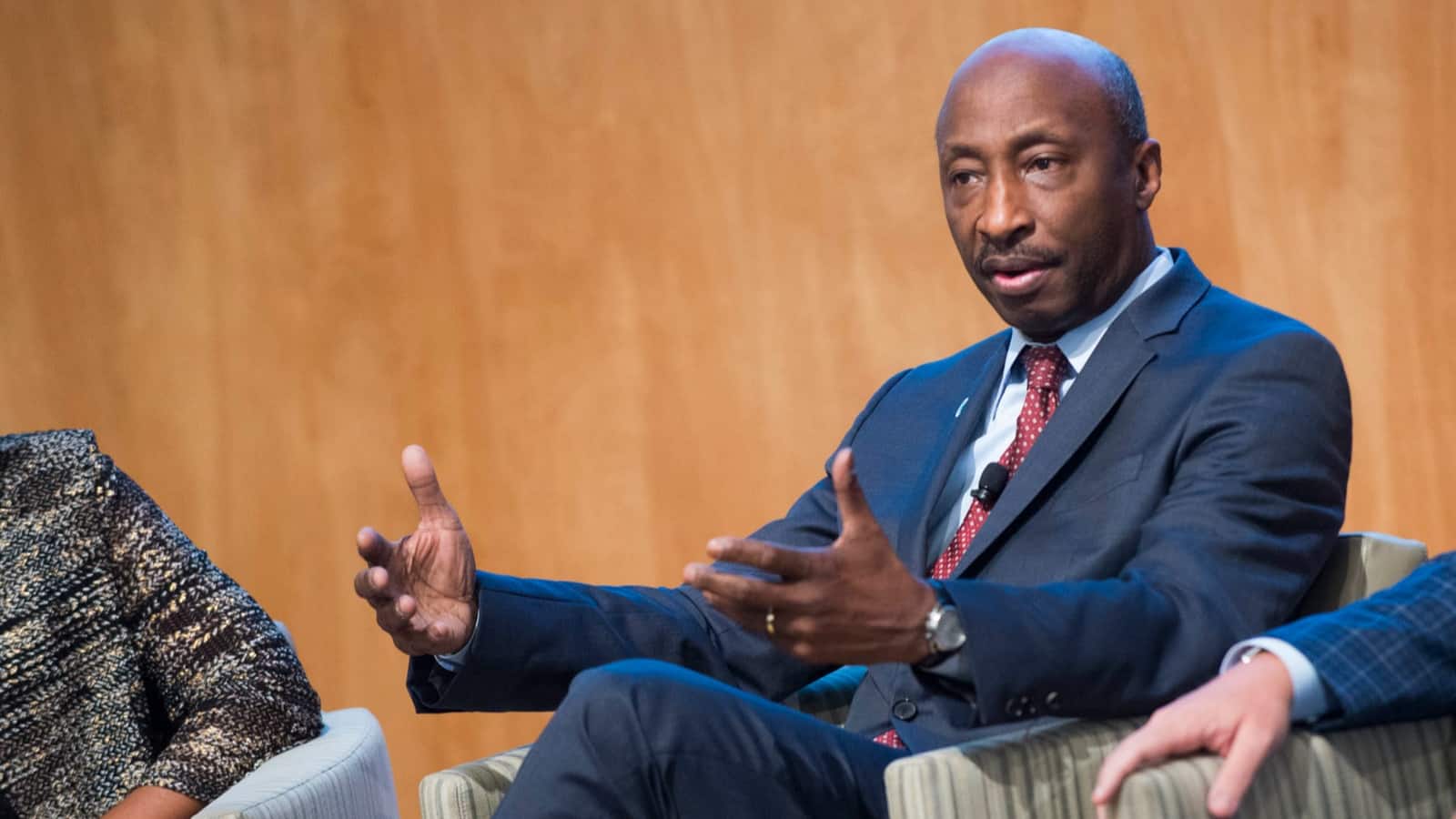Merck CEO Ken Frazier Talks Diversity in Manufacturing

Merck Chairman and CEO Ken Frazier is one of the few African American CEOs of a Fortune 100 company and a passionate advocate of manufacturing’s diversity and inclusion efforts. Recently, Manufacturing Institute Executive Director Carolyn Lee asked him a few questions by email about Merck’s approach. The condensed interview is below.
What advice do you have for CEOs looking to improve their organizations’ diversity and culture of inclusion?
Well, first things first—you must understand your own environment. What does the data tell you about the diversity of your organization? Do your employees believe they can bring their most authentic selves to work each day? What are people telling you? You should be having courageous conversations with them.
Once you figure out what your employees think, you can work on changing that environment. You should also plan on integrating your solutions into all your internal and external policies.
From there, you need to monitor progress and make sure your leadership is modeling the changes for all employees. Those leaders must be held accountable for your D&I goals.
How have you implemented such an approach at Merck?
We work hard to make our culture as inclusive as possible, so that all our workers feel empowered to fulfill our mission of saving and improving lives. We’ve made sure that our talent processes take unconscious bias into account, from hiring to reviews to succession planning. We’ve also created employee business resource groups, which not only support people at work, but have a meaningful say in our business practices.
Meanwhile, we weave D&I efforts into our day-to-day business activities. We work to get diverse patients into clinical trials, ensure our business strategies are relevant to patients all around the world and prioritize diversity among our suppliers.
Diverse employees are also a major asset for a company serving a diverse patient base around the globe. We need employees to bring their knowledge and experience to work so they can teach us how to serve our patients better.
And lastly, I strongly believe that we must learn from and be a role model to others, both in manufacturing and beyond. We have joined coalitions and organizations such as The CEO Pledge for Diversity and Inclusion, Paradigm for Parity and The Valuable 500, all of which do excellent work in the D&I sphere.
How can D&I efforts complement the industry’s work to close the “skills gap”?
We know there were around 12 million unfilled jobs in this country before the pandemic, and there are 5 million inner-city and other African American kids who want access to the economy. They want to be participants. They want to be citizens. They want to be leaders. What they lack is the education and the opportunity—and we business leaders can fix that.
Following the industry’s June “Pledge for Action,” the National Association of Manufacturers brought industry leaders together to focus on recommending bold next steps to increase equity and parity in our sector and increase opportunities for underrepresented communities in America. Click here to add your company to manufacturers’ combined efforts to make a difference—and make a Pledge for Action Commitment.
And register here for the Manufacturing Institute’s Virtual D&I Summit on December 7 and 8, where you’ll learn more about advancing diversity and inclusion in the manufacturing workforce.
